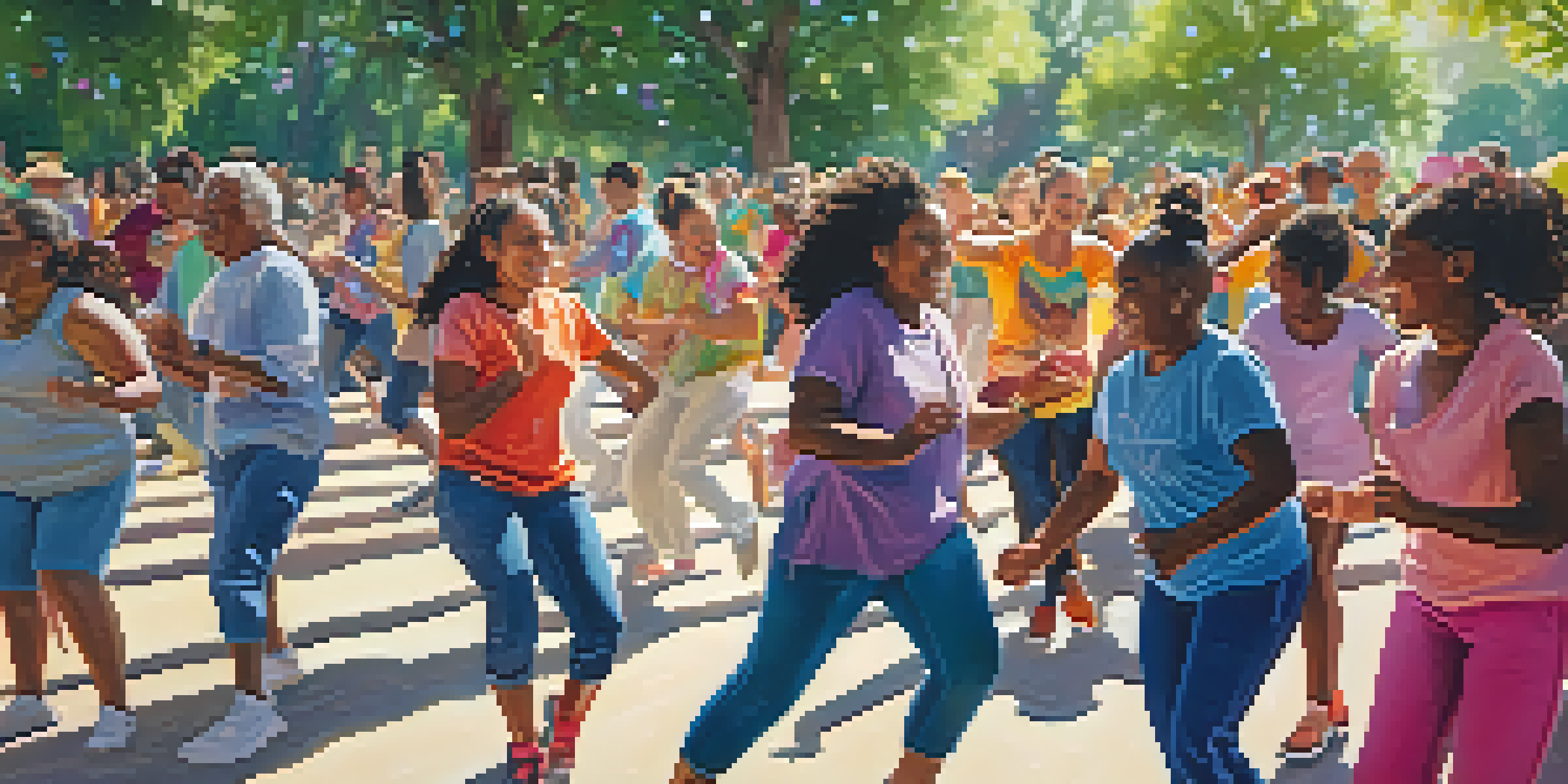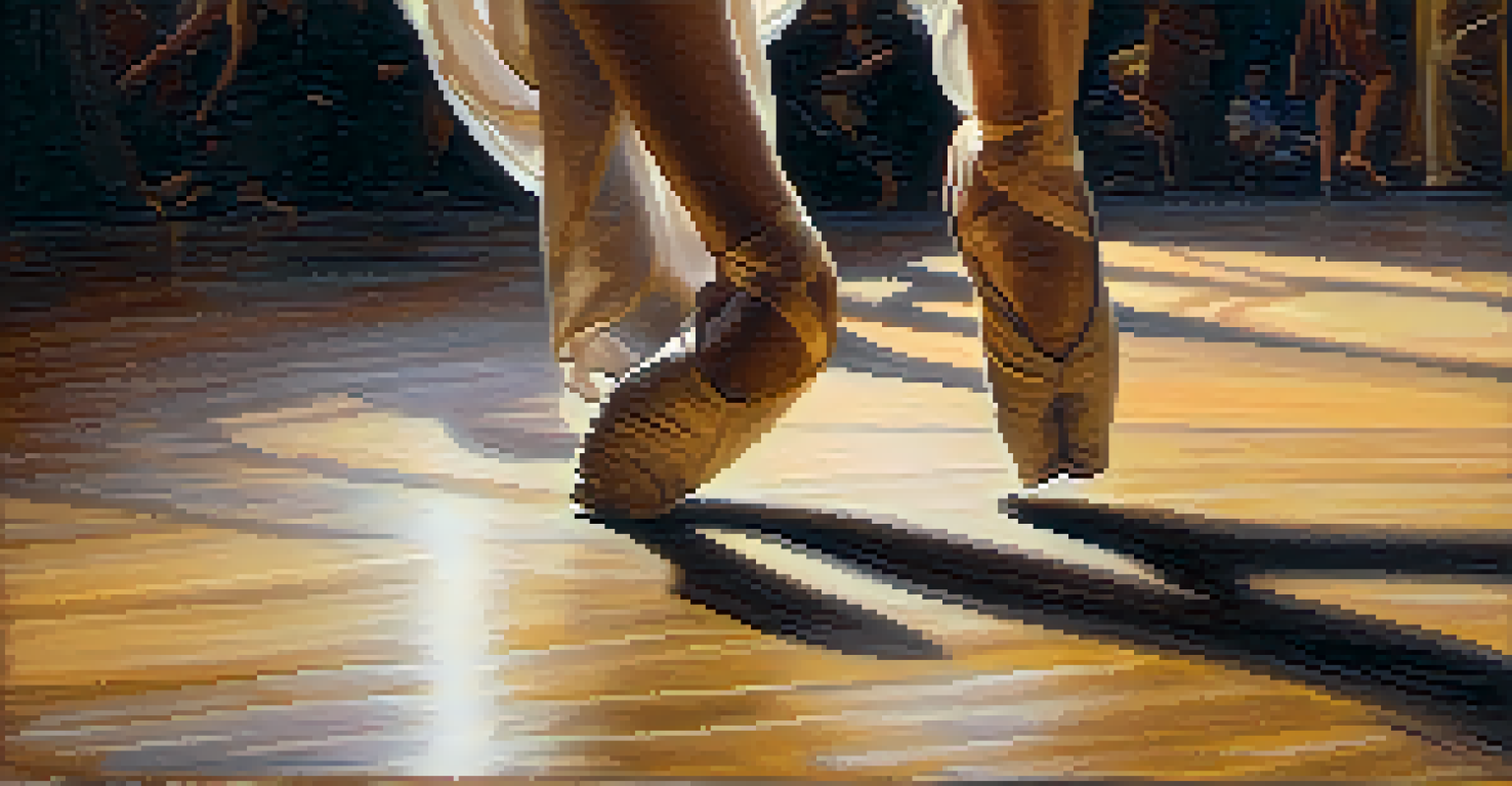The Healing Power of Dance: Response to Social Crises

Understanding Dance as a Form of Healing
Dance has been a form of expression and communication for centuries. It allows individuals to convey emotions that might be difficult to articulate with words. In times of social crises, dance can serve as a powerful tool for healing and connection.
Dance is the hidden language of the soul.
Through movement, people can release pent-up emotions and stress, fostering a sense of relief and rejuvenation. The act of dancing physically engages the body, which can help mitigate feelings of anxiety and sadness. This physical release can be particularly beneficial during challenging times.
Moreover, dance can create a sense of community, uniting individuals through shared experiences. It provides a platform for collective healing, where people can come together to express their feelings and support one another.
Historical Context: Dance in Times of Crisis
Throughout history, dance has played a crucial role during periods of social upheaval and crises. From the civil rights movement to the AIDS epidemic, dance has served as a form of protest, healing, and resilience. These movements have shown how dance can be a response to societal challenges.

For example, during the civil rights era, artists like Alvin Ailey used dance to capture the struggles and triumphs of Black Americans. His works not only highlighted the pain of oppression but also celebrated the strength of the community through movement. This illustrates how dance can be both a reflection of societal issues and a means of healing.
Dance as a Healing Tool
Dance serves as a powerful form of expression that helps individuals release emotions and foster community healing.
Similarly, during the COVID-19 pandemic, virtual dance classes and flash mobs emerged as a creative outlet for individuals feeling isolated. These initiatives allowed people to connect, express themselves, and find joy amidst uncertainty, showcasing dance’s enduring power during crises.
The Psychological Benefits of Dance
Engaging in dance can significantly improve mental health by reducing symptoms of depression and anxiety. When individuals dance, their brains release endorphins, often referred to as 'feel-good' hormones. This chemical boost can help to alleviate feelings of sadness and contribute to overall well-being.
Through dance, we can express what we cannot put into words.
Moreover, dance encourages mindfulness by requiring individuals to focus on their movements and the rhythms of the music. This focus can serve as a form of meditation, providing a mental break from the stresses of everyday life and enabling a deeper connection to one's body and emotions.
The social aspect of dance also plays a vital role in psychological healing. Participating in group dance activities can foster a sense of belonging and reduce feelings of loneliness, which is particularly important during times of crisis when isolation can be prevalent.
Dance as a Catalyst for Social Change
Dance has often been used as a vehicle for social change, empowering communities to voice their concerns and advocate for justice. Through choreographed performances, dancers can tell stories that resonate with larger societal issues, raising awareness and prompting dialogue.
For instance, the dance piece 'Revelations' by Alvin Ailey is a prime example of using art to highlight the African American experience. It not only brings attention to the struggles faced but also celebrates resilience and hope, inspiring audiences to reflect on social injustices.
Historical Impact of Dance
Throughout history, dance has been a vital response to social crises, uniting communities and advocating for change.
In this way, dance transcends mere entertainment; it becomes a form of activism. By harnessing the power of movement, dancers can ignite conversations and encourage collective action, making it a vital tool in the fight for social change.
Community Dance Projects: Uniting People
Community dance projects have emerged as effective ways to bring people together during crises. These initiatives often involve workshops, performances, and collaborative choreography, allowing participants to share their stories and experiences through dance. They create a safe space for expression and healing.
For example, programs like 'Dancing with Parkinson's' provide individuals with a chance to engage with their bodies and connect with others facing similar challenges. This sense of community not only fosters personal healing but also cultivates empathy and understanding among participants.
These projects highlight the power of dance to bridge gaps between diverse groups, promoting inclusivity and solidarity. In times of social unrest or crisis, they serve as a reminder of our shared humanity and the strength found in unity.
Dance Therapy: A Professional Approach to Healing
Dance therapy is a professional practice that combines movement with psychotherapy to promote emotional, cognitive, and physical healing. Certified dance therapists use structured movement sessions to help clients express their feelings and process traumatic experiences. This approach recognizes the mind-body connection and utilizes it for therapeutic benefits.
Research has shown that dance therapy can be particularly effective for individuals dealing with trauma, as it allows for non-verbal expression of emotions. By moving their bodies, clients can access feelings that may be difficult to articulate, facilitating a deeper understanding of their experiences.
Benefits of Dance Therapy
Dance therapy promotes emotional healing by utilizing movement to facilitate non-verbal expression and enhance self-awareness.
Additionally, dance therapy can enhance self-esteem and body awareness, empowering individuals to feel more in control of their emotions and physicality. This empowerment is crucial in helping people navigate the complexities of social crises and personal challenges.
The Future of Dance in Healing and Social Movements
As we look to the future, the role of dance in healing and social movements is likely to continue evolving. With advancements in technology, virtual dance initiatives will probably play a more significant role in connecting individuals across geographical boundaries. This shift can foster global conversations about social issues through the universal language of dance.
Moreover, as mental health awareness grows, dance therapy and community dance projects may gain more recognition and support. This increased visibility can lead to more funding and resources, allowing more people to benefit from the healing power of dance.

Ultimately, dance will remain an essential part of our collective response to social crises, offering a means of expression, connection, and healing. It serves as a reminder that even in the most challenging times, we can find solace and strength through movement.